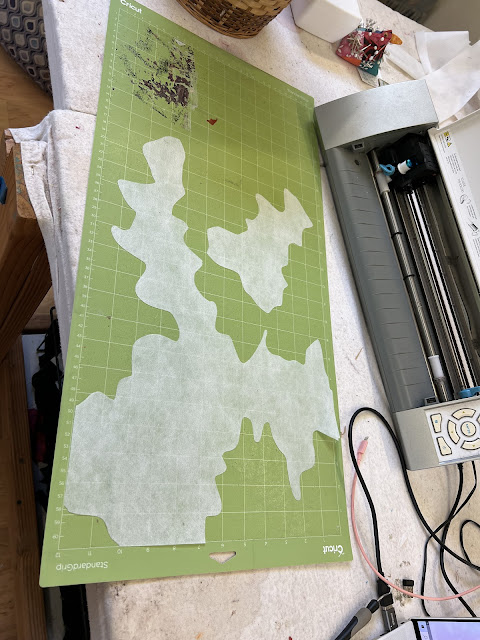I've been working on a series of quilts featuring parts of the Episcopal liturgy for many years now (see more pieces in the series here), and this new piece I worked on for several months this year is another in the series.
Towards the beginning of the service we have a short prayer called a collect, usually it has something to do with the liturgical season, but there are also collects and short prayers for other special occasions. This one is about our spiritual charge to protect and care for our environment and as I was thinking of what to do for this part of the service, this prayer jumped out at me.
III. For stewardship of creation
O merciful Creator, your hand is open wide to satisfy the
needs of every living creature: Make us always thankful for
your loving providence; and grant that we, remembering the
account that we must one day give, may be faithful stewards
of your good gifts; through Jesus Christ our Lord, who with
you and the Holy Spirit lives and reigns, one God, for ever
and ever. Amen.
I decided to use it for this quilt, and as decoration to include as many of the natural symbols of Oklahoma as I could. Many of the prior quilts in this series have incorporated symbolism that references my heart-home in southern New Mexico, but I'm a strong believer in preserving native ecosystems even if they aren't as immediately glorious as the mountain west (e.g. the great plains).
I started with this silk (thanks Georgia!) that mom and I dyed last year at Christmas. We were doing lots of experimenting and I was going for a bluer color but I got this sort of purply shade I've come to really like. The silk was lightweight with a nice woven pattern that gives some fun visual interest up close.
I do my desigining in adobe illustrator, and then for this piece, my mom kindly made silk screens for me using her heat machine. We're never sure whether it's going to make them right or not, but it worked this time and with much care int he aligning, I got all the words of the prayer silk screened onto the surface in gold.
For all the accents, imagery and borders, I pulled a bunch of silky slinky velvety fabrics out and just pinned them all up. I like using velvets, they add such a richness, but they won't cut on my silhouette. I just bought a brother scan and cut that is much newer than the silhouette, so in future I'm hoping to be able to cut velvet but we'll see. For this one I cold only use it places I was willing to hand cut.
After auditioning fabrics, my next step was to do the initials. The pinkish backing behind the small initials is some handpainted polyester from way back, I think most of it was originally for the glycocalyx quilt. For the big O at the beginning I incorporated this lovely rose silk we also dyed at Christmas and then filled the O with selenite crystals. Selenite crystals are a distinctively Oklahoman crystal (they're actually the state crystal) and during certain times of the year you can go dig for them in the salt flats.
Of course I didn't take very many in process pictures, but the top and right borders feature these rose rocks. They look sort of like abstract roses, but are actually the barite rose rocks that are also so characteristic of Oklahoma. They're the state rock and also very fun to go and hunt for.
On the left border I featured the state grass of Oklahoma, Indian garss (Sorghastrum nutans). To be honest, it's pretty abstracted. I'm not sure you could distinguish it from any other kind of grass but the idea is there! In the border I added our state butterfly, the black swallowtail, as though it were flitting gaily through the grass.
I didn't get any pictures of the bottom border in progress, but come back later in the week to see the final quilt!




















































